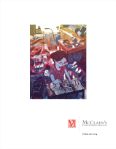
What is Washi?
Washi is distinguished from modern commercial paper,
even high quality art paper, by being made entirely by
hand, using traditional methods, in small isolated
villages in Japan.
More Washi is made in Japan than all the handmade paper produced in the rest of the world. However, production is slow and labor intensive, so the amount of Washi available is small, making it relatively expensive. This expense is more than made up for by the high quality, consistency, performance and beauty of the paper.
Washi is made from either gampi, kozo (mulberry) or mitsumata (edgeworthia). Sometimes buffered, non-acidic wood pulp is mixed in to add absorbency, softness and bulk to the paper. Many Japanese printmakers knowingly order their personal Washi made with a percentage of wood pulp.
Please note that the term "rice paper" is an inappropriate misnomer for Washi. Rice straw is never used in Japanese papermaking.
All of the papers we carry are made for printmaking. If you print using oil-based ink, any paper we carry will work well. If you print using water-based ink, sized papers are preferable because the ink is less likely to bleed. However, unsized papers can also be used if you work a little drier and only print one or two blocks at one time.
For more information about the paper we carry, go to Learning Center and look under "Paper."

